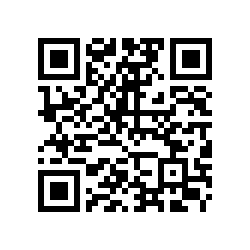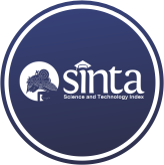Pemodelan Alat Pencegah Micro-Sleep Sebagai Upaya Mitigasi Kecelakaan Transportasi
(1) Program Studi Teknik Informatika, Fakultas Teknik, Universitas Muria Kudus
(2) Program Studi Teknik Informatika, Fakultas Teknik, Universitas Muria Kudus
(3) Program Studi Teknik Informatika, Fakultas Teknik, Universitas Muria Kudus
(*) Corresponding Author
Abstract
Full Text:
PDFReferences
M. J. Thorpy et al., THE INTERNATIONAL CLASSIFICATION OF SLEEP DISORDERS , REVISED A merican A cademy of S leep M edicine. 2005.
G. R. Poudel, C. R. H. Innes, P. J. Bones, R. Watts, and R. D. Jones, “Losing the struggle to stay awake: Divergent thalamic and cortical activity during microsleeps,” Hum. Brain Mapp., 2014.
Y. H. Chou, C. C. Chuang, J. K. Zao, L. W. Ko, and C. T. Lin, “An fMRI study of abrupt-awake episodes during behavioral microsleeps,” in Proceedings of the Annual International Conference of the IEEE Engineering in Medicine and Biology Society, EMBS, 2011.
R. Apinino, “Kenali Microsleep, Gangguan yang Bisa Bikin Kecelakaan.” Liputan 6, 2017.
D. Winterman, “Who, what, why: What is a micro-sleep?” BBC News, 2014.
NCSDR/NHTSA Expert Panel on Driver Fatigue and Sleepiness, “Drowsy Driving and Automobile Crashes,” Drowsy Driving, 2014.
A. J. Blaivas, R. Patel, D. Hom, K. Antigua, and H. Ashtyani, “Quantifying microsleep to help assess subjective sleepiness,” Sleep Med., 2007.
Y. O. Handono, “Waspada! Ketika ‘Microsleep’ Melanda, Nyawa Pengemudi Jadi Taruhanny,” 2018.
A. Watson and G. Zhou, “Microsleep Prediction Using an EKG Capable Heart Rate Monitor,” in Proceedings - 2016 IEEE 1st International Conference on Connected Health: Applications, Systems and Engineering Technologies, CHASE 2016, 2016.
M. Golz, D. Sommer, and D. Mandic, “Microsleep detection in electrophysiological signals,” Proc. ICINCP 2005, no. May 2016, pp. 2–9, 2005.
P. R. Davidson, R. D. Jones, and M. T. R. Peiris, “Detecting Behavioral Microsleeps using EEG and LSTM Recurrent Neural Networks,” in 2005 IEEE Engineering in Medicine and Biology 27th Annual Conference, 2005.
Y. Liang et al., “Prediction of drowsiness events in night shift workers during morning driving,” Accident Analysis and Prevention, 2017.
B. P. angin Ahmad Nawawi Harahap, “SISTEM PENGUKURAN DETAK JANTUNG MANUSIA MENGGUNAKAN MEDIA ONLINE DENGAN JARINGAN WI-FI BERBASIS PC,” Saintia Fis. Univ. Sumatera Utara, pp. 1–7, 2013.
J. Sztajzel, “Heart rate variability: A noninvasive electrocardiographic method to measure the autonomic nervous system,” Swiss Medical Weekly. 2004.
M. Altini, J. Penders, R. Vullers, and O. Amft, “Automatic heart rate normalization for accurate energy expenditure estimation. An analysis of activities of daily living and heart rate features.,” Methods Inf. Med., 2014.
S. Bennett, A History of Control Engineering, 1930-1955. Peter Peregrinus Ltd, 1993.
I. K. Resika Arthana, I. M. A. Pradnyana, and D. P. Y. Kurniati, “Sistem Monitoring Detak Jantung dan Lokasi Pasien,” J. Pendidik. Teknol. dan Kejuru., vol. 15, no. 1, pp. 124–133, 2018.
I. K. R. Arthana and I. M. A. Pradnyana, “Perancangan alat pendeteksi detak jantung dan notifikasi melalui sms,” pp. 889–895, 2017.
Fachrul Rozie, F. Hadary, and W. F. T. Pontia, “Rancang Bangun Alat Monitoring Jumlah Denyut Nadi / Jantung Berbasis Android,” J. Tek. Elektro Univ. Tanjungpura, pp. 1–10, 2016.
M. W. Sari and S. Wardani, “Rancang Bangun Aplikasi Monitoring Detak Jantung Melalui Finger Test Berbasis Arduino,” J. EKSIS, vol. 9, pp. 105–112, 2016.
T. Fritz and S. C. Muller, “Leveraging Biometric Data to Boost Software Developer Productivity,” in 2016 IEEE 23rd International Conference on Software Analysis, Evolution, and Reengineering (SANER), 2016.
T. L. Hartono, F. D. Setiaji, I. Setyawan, P. Studi, T. Elektro, and F. Teknik, “ALAT BANTU ANALISIS HEART RATE VARIABILITY,” Techné J. Ilm. Elektrotek., vol. 12 No. 2 O, pp. 141–158, 2013.
DOI: http://dx.doi.org/10.30645/j-sakti.v3i1.92
Refbacks
- There are currently no refbacks.
J-SAKTI (Jurnal Sains Komputer & Informatika)
Published Papers Indexed/Abstracted By:
Jumlah Kunjungan :



















